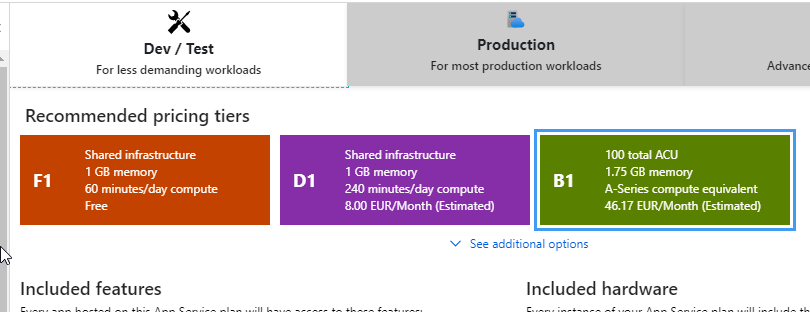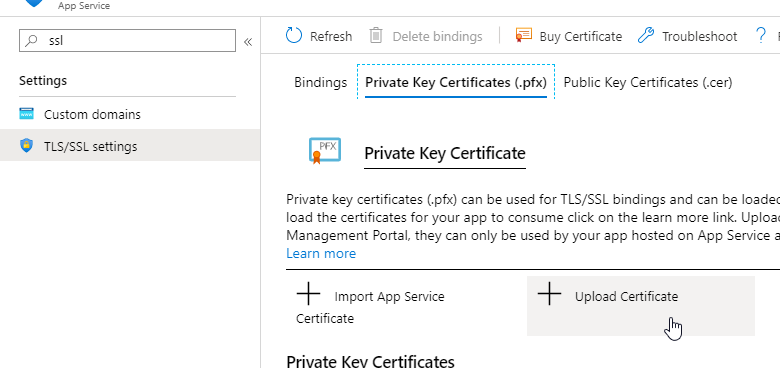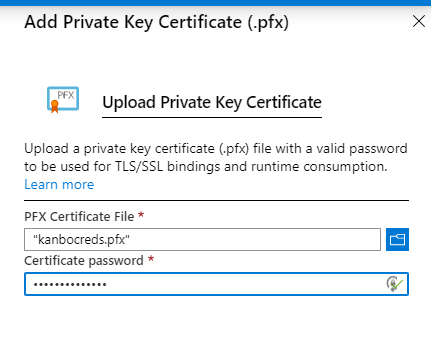-
KanBo Installation
- KanBo Installation on Office 365 and Azure (Manual)
- KanBo Installation on Office 365 and Azure (KanBo Installer)
- KanBo On-Premises Installation Requirements and Prerequisites
- KanBo Installation On-Premise SharePoint 2013/2016/2019
- Creating and Updating the Elastic Cloud Deployment
- Creating a Linux Based Virtual Machine on Azure for Elastic Search
- Installing and Configuring Elastic Search on Debian
- Creating a Windows Virtual Machine on Azure for Elastic Search
- Installing and Configuring Elastic Search on Windows
- How to Create a X.509 High-Trust Certificate
- KanBo Setup
- KanBo Modern Webpart Installation
- Uninstall KanBo from Office 365
- Supported Browsers
-
KanBo Updates
-
Additional Components
- Setting Up KanBo Email Notifications on Azure
- Setting Up KanBo Email Notifications (On-Premise)
- KanBo Outlook Add-in Installation (O365 & On-Premise)
- Send Email to KanBo - Installation (Cloud)
- Send Email to KanBo - Installation (On-Premise)
- Enabling Email a Card Message
- KanBo and Microsoft Power Automate integration: Installation
- KanBo and Microsoft Power Automate Integration: Activation
- Installation of KanBo MyBoard Synchronization with Outlook Calendar and Outlook Tasks
- Installation of the Autodesk BIM Plugin for KanBo
- KanBo and UiPath Integration: Configuration
- Nintex Integration Installation
- KanBo API for Developers
- KanBo External User Groups (Active Directory Integration)
- KanBo Mini Application Installation
- Plugin for Adding Users to KanBo / Sharepoint When They First Enter it
- SharePoint Profiles Synchronization
- SharePoint Site Collection Balancing and Admin Warnings
- Sync Targets
- Installation of the KanBo Teams App
-
Tips & Tricks
- Configure How Documents Should Be Opened from KanBo
- Customize KanBo Background Images and KanBo Colors
- Define Board Features to Be Enabled or Disabled by Default
- Disable Sleeping Tabs in Browsers
- Disable/Enable Public Boards Creation
- Find Out the Certificate Expiration Dates On-Premise
- Get KanBo ID
- How to Change the Help URL in Your KanBo
- Import Users to KanBo
- Renew Certificate for KanBo Graph Installation
- Show KanBo Version
- Removing syncing of profile pictures in the Profile Sync job
-
Troubleshooting
KanBo and Microsoft Power Automate integration: Installation
Prepare and upload the certificate to KanBo
1. Create the certificate pair using this guide.
2. Open Azure portal. Make sure your Web App is at least on the Basic plan.

3. Go to TLS/SSL Bindings and go to Private Key Certificates (.pfx) Select Upload certificate.

4. Provide the password and Upload it.
 5. Copy the certificate's thumbprint.
5. Copy the certificate's thumbprint.

6. Open Configuration and add a new Application Setting.

7. The setting's name should be WEBSITE_LOAD_CERTIFICATES. The value should be the Thumbprint of certificate. Save it.
Configuration
1. Open KanBo web.config.
- go to https://your-kanbo-address.scm.azurewebsites.net/DebugConsole/?shell=powershell
- then go to site -> wwwroot -> appsettings.json and start its edition.
2. Add the following lines.{
"type": "auth.oauth",
"issuer": "",
"children": [
[
"cert",
{
"type": "x509-store",
"store-name": "my",
"store-location": "currentuser",
"key": "thumbprint",
"value": "",
"valid-only": false
}
],
{
"type": "client",
"id": "",
"secret": "",
"url": "",
"name": ""
}
]
},
{
"type": "plugin",
"alias": "trigger.worker"
},
"trigger-action.webhook"
3. Paste your information inside sections:
Issuer: "" - add a unique name between quotation marks, like:
Issuer: "PowerAuth"
value: "" - add certificate's thumbprint between quotation marks, like
value: "YPWP4YL7DR2KO14YHPGLLDEQZ993FAMZDP7IYMUL"
Save the appsettings.json.
4. Go back to KanBo directory and open the plugins folder.
Make sure to have the following file there:
- KanBo.Oauth.dll
If the file is missing, please contact KanBo support at support@kanboapp.com.
Getting the credentials
1. Open the following link in your browser.
- Change "your-kanbo-url" in the url to Your KanBo address.
- Change "your-issuer-name" to name of your issuer from appsettings.json.
You should receive an output like this:
{
"type": "client",
"id": "e2xxxxxxxxxxdf",
"secret": "KjxxxxxxxsU=",
"url": "https://powerautomate.authkanbo.com/kanbo/return",
"name": "powerautomate.authkanbo.com"
}
Add the following to Targets array:
{
"keys": [
"kanxxxxxxxbo.com"
],
"urls": {
"authorization": "kanxxxxxxxbo.com/auth/flowsh/code",
"access": "kanxxxxxxxbo.com/auth/flowsh/token",
"refresh": "kanxxxxxxxbo.com/auth/flowsh/token"
},
"kanboApi": "https://kanxxxxxxxbo.com/JsonApi",
"id": "e2xxxxxdf",
"secret": "mOxxxxx0d"
}</client>
2. Open appsettings.json and replace the entry and paste the client entry like this:.


3. Send the data under "Add the following to Targets array:" to support@kanboapp.com, as this entry needs to be added to our broker. We will let You know when the process is finished.
4. After that is done, you can start with activating KanBo custom connector for Power Automate
This article is related to:
Was this article helpful?
Please, contact us if you have any additional questions.
